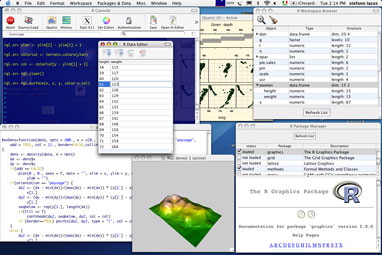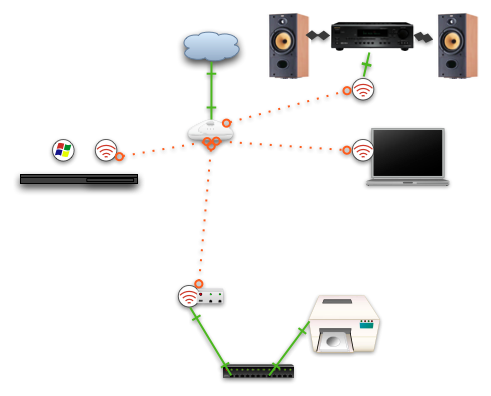I just found a new must-have application for all rampant media consumers like me: the Delicious Library. It’s also a killer app for the iSight. Delicious Library is a media management application that allows you to inventory your books, music, videos, and games, and to manage check-in and check-out. The killer app part: it can scan your item’s bar codes using the iSight and look up all the information from Amazon, including cover art and reviews, and there’s a drag and drop checkout system.
Issues: Getting the hang of using the iSight to scan was a little tricky. (The FAQ includes some tongue in cheek instructions for using toothpicks and a rubber band to set up a distance gauge on your iSight to speed up the process.)
More importantly, not every item has a bar code, and not every item’s bar code is in Amazon. I tested the scanner with 11 DVDs, 10 CDs, and a CD boxed set. It had no problem with any DVD that I tried, but it only managed to scan four of the CDs and the CD boxed set correctly. Of the other CDs, the problems included:
- No bar code on CD case: a single cd from the Miles Davis Columbia boxed set didn’t have a bar code.
- Music club CDs: both Columbia and BMG, who built the majority of my CD library from 1990 to 1996, replace the bar code on CD art with their own bar code or a message from the club.
- Wrong release found: John Coltrane’s Lush Life scanned as a Count Basie CD.
- Nothing found: one indie label release, Eva Cassidy’s Live at Blues Alley, turned up nothing in Amazon’s DB (probably because it was subsequently reissued by a bigger label).
In these cases, I used the title search feature. While this was much more convenient than other release lookups that I’ve used, it required a bit more work. Still, a very cool library management tool and a killer use of the iSight. This solution sure beats the hell out of the CueCat.
Almost forgot: A major wish list item would have to be scriptability. The application has no AppleScript dictionary at all. I’d love to be able to grab an item and output HTML. I’d also like to be able to substitute my own Amazon Associate ID rather than the company’s for doing lookups.

 becomes
becomes 

